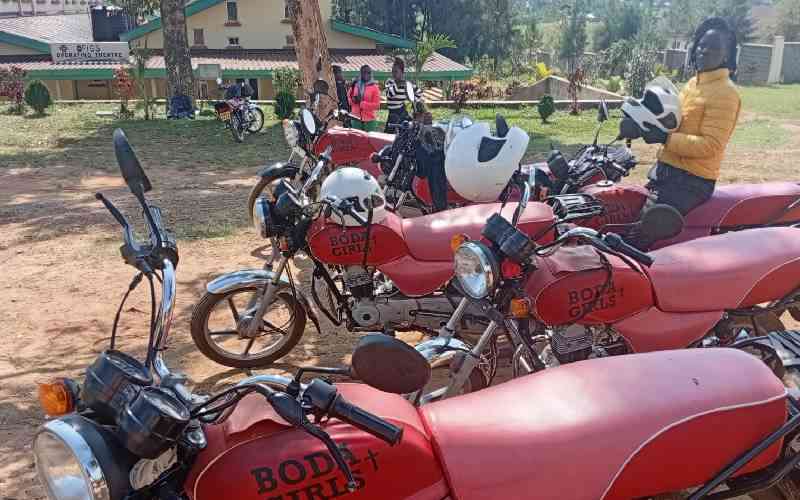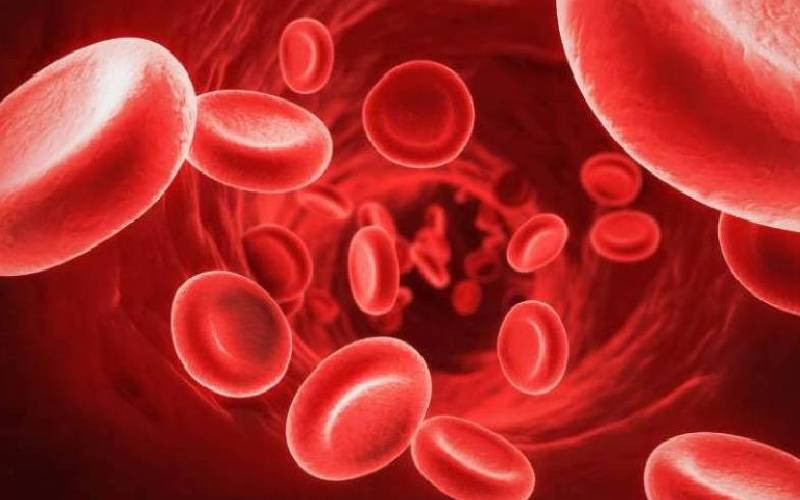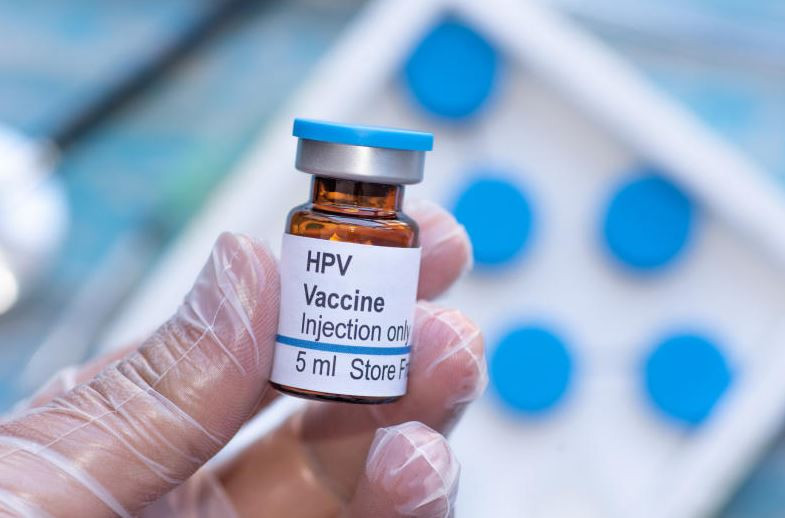
Former AFC Leopards winger Ezekiel Otuoma passed away at the age of 31 after a long battle with Motor Neurone Disease (MND), a rear autoimmune condition that affects the brain and nerves.
Regarded as one of the most ruthless strikers in the FKF Premier League in recent years, Otuoma was diagnosed with the condition in 2015.
Otuoma played for defunct Muhoroni Youth, Ulinzi Stars, Western Stima, and AFC Leopards with his last club being Talanta and it was at the National Super League side when his health started to deteriorate, ultimately forcing him to retire from the game.
According to Dr Matilda Wendo, a Neurologist at The Aga Khan Hospital, MNDs are a group of progressive neurological disorders that destroy motor neurons, the cells that control skeletal muscle activity such as walking, breathing, speaking, and swallowing.
"This group includes diseases such as Amyotrophic Lateral Sclerosis, Progressive Bulbar Palsy, Mary Lateral Sclerosis, Progressive Muscular Atrophy, Spinal Macular Atrophy Kennedy's disease, and Post-polio Syndrome," said Dr Wendo.
Messages or signals from nerve cells in the brain's upper motor neurons are typically transmitted to nerve cells in the brainstem and spinal cord (lower motor neurons), which then send signals to muscles throughout the body. This process is essential for muscle movement.
Dr Wendo explains that when signals from the lower motor neurons to the muscles are disrupted, the muscles begin to weaken and shrink, a condition known as muscle atrophy or wasting.
Additionally, muscles may also start to spontaneously twitch. These twitches, called fasciculation, can sometimes be seen or felt just below the skin's surface.
Muscle stiffness
When lower motor neurons cannot receive signals from the upper motor neurons, it can lead to muscle stiffness and overactive reflexes, making voluntary movements slow and difficult.
Over time, individuals with Motor Neuron Diseases may lose the ability to walk or control other movements.
These diseases are classified based on whether the loss of function is due to an inherited genetic mutation or occurs sporadically (without a family history), and whether they affect the upper motor neurons, lower motor neurons, or both.
Inherited Motor Neuron Diseases are typically caused by changes in a single gene.
She adds that although there are several types of Motor Neuron Diseases, they all cause muscle weakness that gradually worsens over time and can lead to physical disability. In some people, these diseases are fatal.
Weakness in muscles that control breathing can lead to respiratory insufficiency, a condition in which the lungs cannot properly take in oxygen or expel carbon dioxide, which is common in people with this condition.
Symptoms may include breathlessness, shortness of breath that occurs while lying down, recurrent chest infections, disturbed sleep, poor concentration and/or memory, confusion, morning headaches, and fatigue.
Dr Wendo says, there are different types of Motor Neuron Diseases which include;
Amyotrophic lateral sclerosis (ALS)
It was formerly known as Lou Gehrig's disease and can affect the upper and/or lower motor neurons. It causes rapid loss of muscle control and eventual paralysis.
Spinal muscular atrophy (SMA)
It refers to a group of hereditary diseases that affect lower motor neurons. The most common form is caused by a mutated or missing gene known as the survival motor neuron gene 1 (SMN1), which causes the neurons to deteriorate, producing muscle weakness and wasting.
Spinal muscular atrophy with respiratory distress type 1 (SMARD1)
Is a very rare form of Spinal Muscular Atrophy caused by mutations in the gene. Symptoms appear during infancy, between ages 6 weeks and 6 months. Children with SMARD1 suddenly may be unable to breathe due to diaphragm paralysis and may develop weakness in the muscles of their hands and feet.
Congenital SMA with arthrogryposis
This is a rare disorder that appears at birth. Symptoms include severe joint contractures making babies unable to extend or flex the affected joints. In most children, both the arms and legs are affected. Other symptoms include scoliosis (curvature of the spine), chest deformity, respiratory problems, unusually small jaw, and drooping eyelids.
Progressive bulbar palsy (PBP)
It is also known as progressive bulbar atrophy, due to injury of the upper motor neurons in the brainstem or the lower motor neurons connected to the brainstem. The brainstem controls the muscles needed for swallowing, speaking, chewing, and other functions.
Progressive Bulbar Palsy symptoms worsen over time and include trouble chewing, speaking, and swallowing. People suffering from the condition may also have weakness in the tongue and facial muscles, twitches, and a reduced gag reflex. They may also experience weakness in the arms or legs, but it is less noticeable than other symptoms.
Because they have difficulty swallowing, people with the condition are at risk of choking and inhaling food and fluids, including saliva, into the lungs. They may also laugh or cry at inappropriate times, called Pseudobulbar affect or pathological laughing and crying.
Some symptoms of stroke and myasthenia gravis are similar to those of Progressive Bulbar Palsy like slurring of the speech and choking and must be ruled out prior to diagnosis.
Primary Lateral Sclerosis (PLS)
This condition affects only the upper motor neurons, causing difficulty and slowness in the movements of the arms, legs, and face. Symptoms include weakness, muscle stiffness and plasticity, clumsiness, slowing of movement, and problems with balance and speech.
The disorder often affects the legs first, followed by the torso, arms and hands, and finally, the muscles used for swallowing, speaking, and chewing.
PLS is more common in men than in women, with an onset that generally occurs between age 40 and 60. It progresses slowly over years or even decades.
Extensive testing is required to rule out other disorders before diagnosing this condition. A neurologist may need to track the person's symptoms for several years before making a diagnosis.
Unfortunately, there is no cure for Primary Lateral Sclerosis and the rate of symptom progression varies. Many people can walk without assistance early on, but most will need walkers, wheelchairs, or other assistive devices to prevent falls and injuries as the disorder progresses.
Progressive Muscular Atrophy (PMA)
Is an uncommon sub-type of Amyotrophic Lateral Sclerosis marked by slow but progressive damage to the lower motor neurons. It affects men more often than women, and usually as symptoms begin later in life than the actual Amyotrophic Lateral Sclerosis.
People with Progressive Muscular Atrophy usually notice weakness in their hands or feet followed by spreads into other body regions. They may have weakness in the torso muscles and may have trouble breathing.
Exposure to cold can worsen the person's symptoms. Other symptoms may include muscle wasting or shrinking, clumsy hand movements, twitches, and muscle cramps.
Kennedy's disease
It is an inherited lower motor neuron disorder that affects men. The onset of symptoms varies, but usually begins between the ages of 20 and 40. Kennedy's disease is also known as spinal and bulbar muscular atrophy, Bulbo-spinal muscular atrophy, or X-linked spinal and bulbar muscular atrophy.
It is caused by mutations in the gene for the androgen or the male sex hormone receptor. Daughters of people with Kennedy's disease have a 50 per cent chance of having a son affected by the disease.
Kennedy's disease is slowly progressive. Early symptoms include tremor of the hands when they are outstretched, muscle cramps with exertion, and fasciculation.
Eventually, individuals develop weakness in their arms and legs. Weakness of the facial and tongue muscles may occur later in the disorder and often leads to difficulty swallowing, slurred speech, and repeated cases of pneumonia.
Some people develop gynecomastia or excessive enlargement of male breasts and low sperm count or infertility. Others may develop diabetes.
Currently, there is no known cure for Kennedy's disease but treatments are available to help alleviate some of the symptoms.
Physical and occupational therapy to improve function and prevent injuries is often recommended. Some individuals may use mobility devices such as wheelchairs when the weakness becomes more severe.
Post-polio syndrome (PPS)
This condition usually occurs 15-40 years after a person has polio, an infectious viral disease. Post-Polio Syndrome is believed to be the result of deterioration of the motor neurons over many years that leads to loss of muscle strength and dysfunction.
It is not contagious and only someone who has had polio can develop the condition although not everyone who has had polio will develop Post- Polio Syndrome.
The polio vaccine has essentially eradicated polio from most African countries particularly Kenya. However, polio still exists in some countries, where cases of Post-Polio Syndrome still occurs.
This condition is rarely life-threatening, but the symptoms, which include muscle weakness, fatigue, atrophy, and scoliosis, can significantly interfere with a person's ability to function independently.
Who is more likely to have motor neuron diseases?
Motor Neuron Diseases occur in both adults and children. In children, the conditions are typically caused by specific gene mutations, as in spinal muscular atrophy.
Symptoms may be present at birth or appear in early childhood. In adults, the conditions are more likely to be sporadic, meaning the disease occurs with no family history. The symptoms typically appear after age 50, though onset of disease can occur at any age.
While some Motor Neuron Diseases are inherited, the causes of most this conditions are not known. In sporadic or non-inherited Motor Neuron Diseases, environmental, viral, and/or other factors may play a role in the development of the disease.
Dr Wendo say there are no specific tests to diagnose Motor Neuron Diseases in most cases.
"It tends to affect people around the ages between 50 to 70, although in Africa we have found that it may happen in younger age groups in about 5 to 10, which is related to genetic mutation that can run in families," she says.
The Neurologist says ymptoms may vary among individuals and, in the early stages, may be similar to other diseases, making diagnosis difficult. However, there are genetic tests for Spinal Muscular Atrophy, Kennedy's disease, and some genetic causes of Amyotrophic Lateral Sclerosis.
To diagnose Motor Neuron Diseases, a doctor will obtain a thorough medical history and perform a physical exam followed by an extensive neurological exam to assess motor and sensory function, hearing and speech, vision, coordination and balance, thinking, and changes in mood or behavior.
The following two tests can identify whether the person may have a nerve or muscle disease, or a Motor Neuron Diseases.
Electromyography or EMG is used to diagnose lower motor neuron disorders, as well as disorders of muscle and peripheral nerves. It assesses electrical activity in the muscles during movement and at rest.
A nerve conduction study is usually done in combination with an EMG. Nerve conduction studies measure the speed and size of the signal from the nerves using small electrodes taped to the skin.
Additional tests may include Laboratory tests of blood, urine, or cerebrospinal fluid can rule out other disorders that may have symptoms similar to MNDs.
The Neuro specialist may recommend Magnetic Resonance Imaging (MRI). However, MRI can help exclude other diseases that have symptoms similar to Motor Neuron Diseases, such as brain and spinal cord tumors, inflammation, infection, and vascular irregularities that may lead to stroke.
MRI can also detect and monitor inflammatory disorders such as multiple sclerosis and can document brain injury from trauma. It is often used to rule out diseases that affect the head, neck, and spinal cord.
Magnetic resonance spectroscopy is a type of MRI that measures chemicals in the brain and may be used to evaluate the health of the upper motor neurons.
Muscle or nerve biopsy can help diagnose muscle or nerve disease; however, it is an invasive procedure and many experts do not believe it is needed to diagnose MND.
Dr Wendo says there is no cure for most Motor Neuron Diseases, although new treatments are under development. The outlook for individuals with MNDs varies depending on the type and the age the person's symptoms begin.
Some Motor Neuron Diseases, such as Primary Lateral Sclerosis or Kennedy's disease, are usually not fatal and progress slowly. The symptoms in people with Spinal Muscular Atrophy A type III may be stable for long periods.
Some forms of Motor Neuron Diseases, such as the severe form of Spinal Muscular Atrophy and Amyotrophic Lateral Sclerosis are fatal.
Treatments are available to help with some symptoms and supportive treatment can help people maintain their independence and quality of life.
Multidisciplinary clinics, with specialists from neurology, physical and occupational therapy, respiratory therapy, speech therapy, and social work are particularly important in the care of individuals with MNDs.
She however adds that patients with this disease could use supportive therapies for Motor Neuron Diseases
People with Motor Neuron Diseases may also benefit from supportive therapies and assistive devices to help them adapt to changes brought on by the disorders and maintain strength and function for as long as possible.
Physical and occupational therapy and rehabilitation may help the person improve their posture, prevent joint immobility, and slow muscle weakness and atrophy. Stretching and strengthening exercises can help reduce stiffness and increase range of motion and circulation. Some individuals may benefit from speech therapy to improve speech, chewing, and swallowing.
Heating pads can help relieve muscle pain. Mobility and communication devices may help some people maintain their independence.
People with MNDs should eat a balanced diet that provides the proper nutrients to help them maintain their weight and strength as much as possible.
In later stages of the disorders, people who cannot chew or swallow may require a feeding tube. Others may need ventilators to improve breathing at night. Some individuals also may need to use a breathing machine during the day due to weakness in the breathing muscles.
 The Standard Group Plc is a multi-media organization with investments in media
platforms spanning newspaper print
operations, television, radio broadcasting, digital and online services. The
Standard Group is recognized as a
leading multi-media house in Kenya with a key influence in matters of national
and international interest.
The Standard Group Plc is a multi-media organization with investments in media
platforms spanning newspaper print
operations, television, radio broadcasting, digital and online services. The
Standard Group is recognized as a
leading multi-media house in Kenya with a key influence in matters of national
and international interest.











